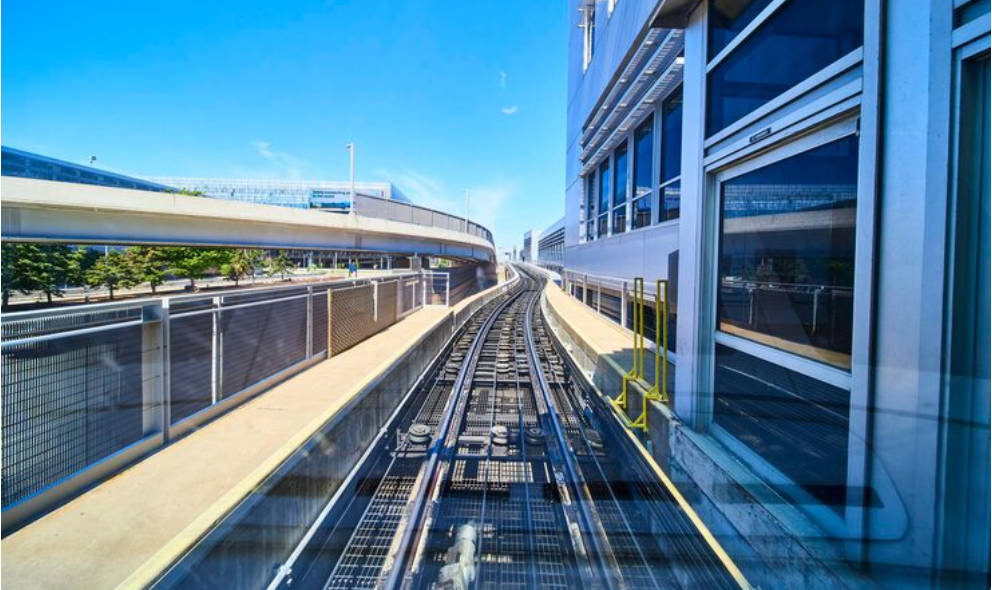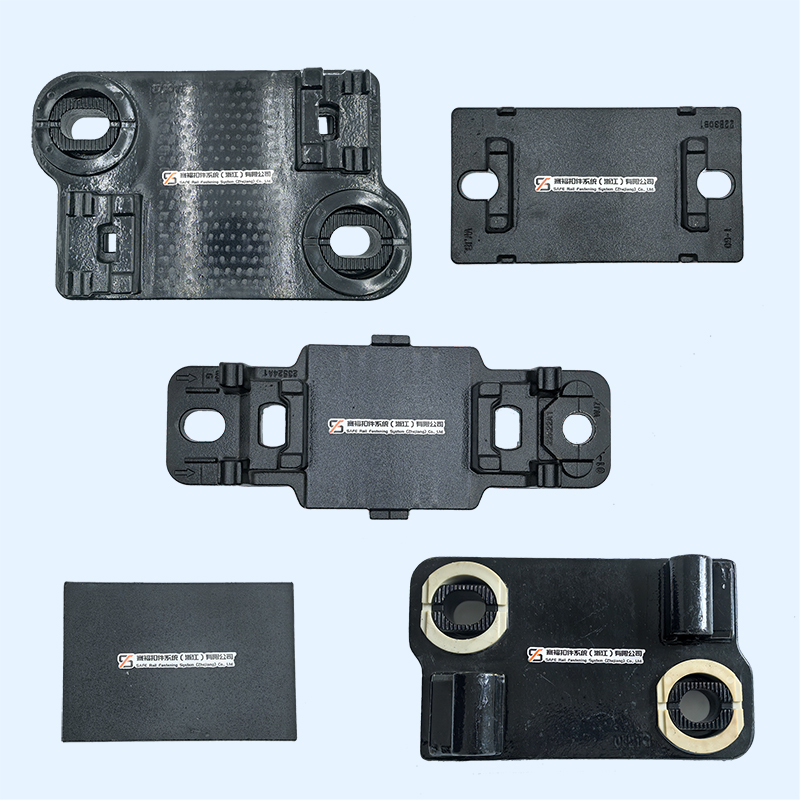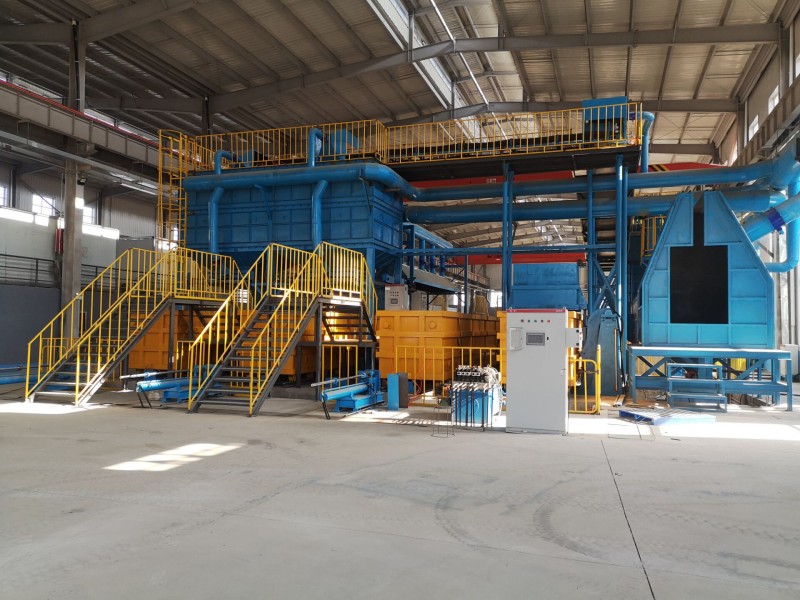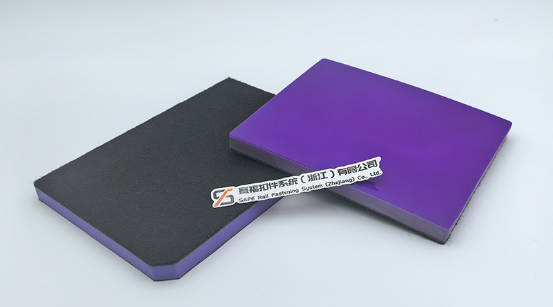The modern railway system depends on rail tie plates to ensure operational safety and track longevity. The components distribute pressure between steel rails and sleepers while reducing vibrations to maintain rail stability. The components of urban transit systems require tie plates for track stability and smooth operation, and extended infrastructure life during high-speed train runs. This paper investigates rail tie plates by explaining their definition and core functions and types before showing how SFFST provides advanced solutions for urban rail infrastructure.

What is a Rail Tie Plate
Definition and Purpose
A rail tie plate functions as a rail base plate that links steel rails to concrete or wooden sleepers to create a firm foundation for rail tracks. The main responsibilities of this component include:
- Distribute vertical loads from trains evenly to the sleepers.
- Reduce vibration and noise.
- Maintain correct track gauge.
- Provide insulation to prevent metal contact that could accelerate wear.
The lack of tie plates enables rails to move excessively under dynamic loads, which results in increased derailment risks and misalignment problems.

Key Components and Materials
The production of rail tie plates requires cast iron and rolled steel materials because these materials maintain their strength and durability when used in outdoor conditions. Standard designs include:
- Shoulders to grip the rail foot.
- Pre-drilled holes for spikes or bolts to attach the plate to the sleeper.
- Vibration-damping pads in some models.
The exact requirements of urban rail networks for tie plate design stem from their operation at high frequencies and multiple speed ranges.
Common Usage in Rail Systems
Rail tie plate are used across multiple rail sectors:
- Conventional freight and passenger lines.
- High-speed trains.
- Metro and light rail systems.
- Heavy-haul networks.
The components serve as essential elements for both ballasted track systems and slab track systems because they enable continuous operation while ensuring passenger comfort.
Core Functions in Urban Transit Systems
Distributing Pressure from Rail to Sleeper
The vertical forces that trains produce get distributed through tie plates, which protect sleepers from damage by stopping concrete sleeper cracks and wooden sleeper deformation. The proper distribution of pressure stands as a critical factor for urban areas that experience frequent train operations.
Reducing Vibration and Noise
Rail tie plates function as vibration dampeners, which minimize train wheel movements to decrease environmental noise pollution. The vibration absorption properties of rail tie plates create better passenger comfort while simultaneously protecting nearby elevated structures and bridges.
Securing the Rail to Prevent Movement
The rail fastening system relies on tie plates to maintain rail stability through lateral movement control and track gauge preservation. The process of conducting periodic tests to monitor rail movement against sleepers results in operational stability and safety for urban transit systems.
Types of Rail Tie Plates
Flat Tie Plates
- Simple design without shoulders.
- Often used with spike-fastened tracks.
- The structure receives lateral support through its external components, which include clips and anchors.
Inclined Tie Plates
- Sloping surface matches the rail foot angle.
- Maintains correct wheel-rail geometry.
- The system operates on fast-moving rail lines and sections with curved paths.
Double-Shoulder Tie Plates
- The product provides superior grip performance on the rail foot when approached from either direction.
- Enhances stability under dynamic forces.
- The system runs continuously in urban metro systems to maintain exact track alignment control.
Importance of Track Stability and Longevity
Enhancing Track Alignment Over Time
The track alignment stays stable because tie plates distribute the train forces that result from continuous train movements. Proper tie plate maintenance allows trains to operate smoothly while avoiding operational interruptions and train accidents.
Preventing Rail Deformation and Wear
The installation of tie plates distributes rail and sleeper stress evenly to prevent metal contact, extend their operational life, and decrease future maintenance costs.
Supporting Long-Term Safety in City Networks
The safe operation of urban rail depends on durable fastening systems that utilize high-quality tie plates. System reliability under heavy usage depends on proper manufacturer guidelines for both installation and maintenance practices.
SFFST’s Role in the Industry
Product Range
The SFFST Rail Fastening System manufactures different rail tie plates and rail base plate products, which serve both metro lines and high-speed trains as well as heavy-haul freight networks. Our products include:
- Flat, inclined, and double-shoulder tie plates.
- Cast shoulder components, gusset plates, and sliding bed plates.
- Rail supports and frog components.
Our company offers standard international models alongside customized solutions that match the specific needs of each project.
Commitment to Quality and Safety Standards
The testing of SFFST products follows worldwide standards, which include the EN 13146 series for evaluating clamping force, impact load absorption, stiffness, and in-service performance. The testing facilities at our company follow both EN standards and domestic TB regulations to deliver track fastening systems that fulfill safety requirements.
Custom Solutions for Urban Transit Projects
The engineering of urban transit systems requires precise design because these systems need to handle tight curves and frequent acceleration and braking while maintaining low noise levels. The Shanghai Research Center of SFFST conducts collaborative research with academic institutions to develop new solutions.
- Inclined double-shoulder plates for metro curves.
- Vibration-insulated flat plates for elevated tracks.
The system contains all necessary support components, which include rail clips and pads, together with tie plates and bolts.

FAQ
Q: What materials are used for SFFST’s rail tie plates?
A: Our tie plates are primarily made of high-strength cast iron, designed to withstand heavy railway stresses.
Q: Can SFFST products be used for high-speed trains?
A: Yes, our solutions meet the EN 13146 series standards for conventional, high-speed, heavy-haul, and metro lines.
Q: Are custom specifications available?
A: SFFST offers both standard fastening types and customized solutions to meet specific project needs.
Q: How do SFFST tie plates stabilize tracks?
A: Our double-shoulder tie plates, combined with advanced clips and pads, resist lateral displacement and maintain long-term track alignment in urban transit systems.




